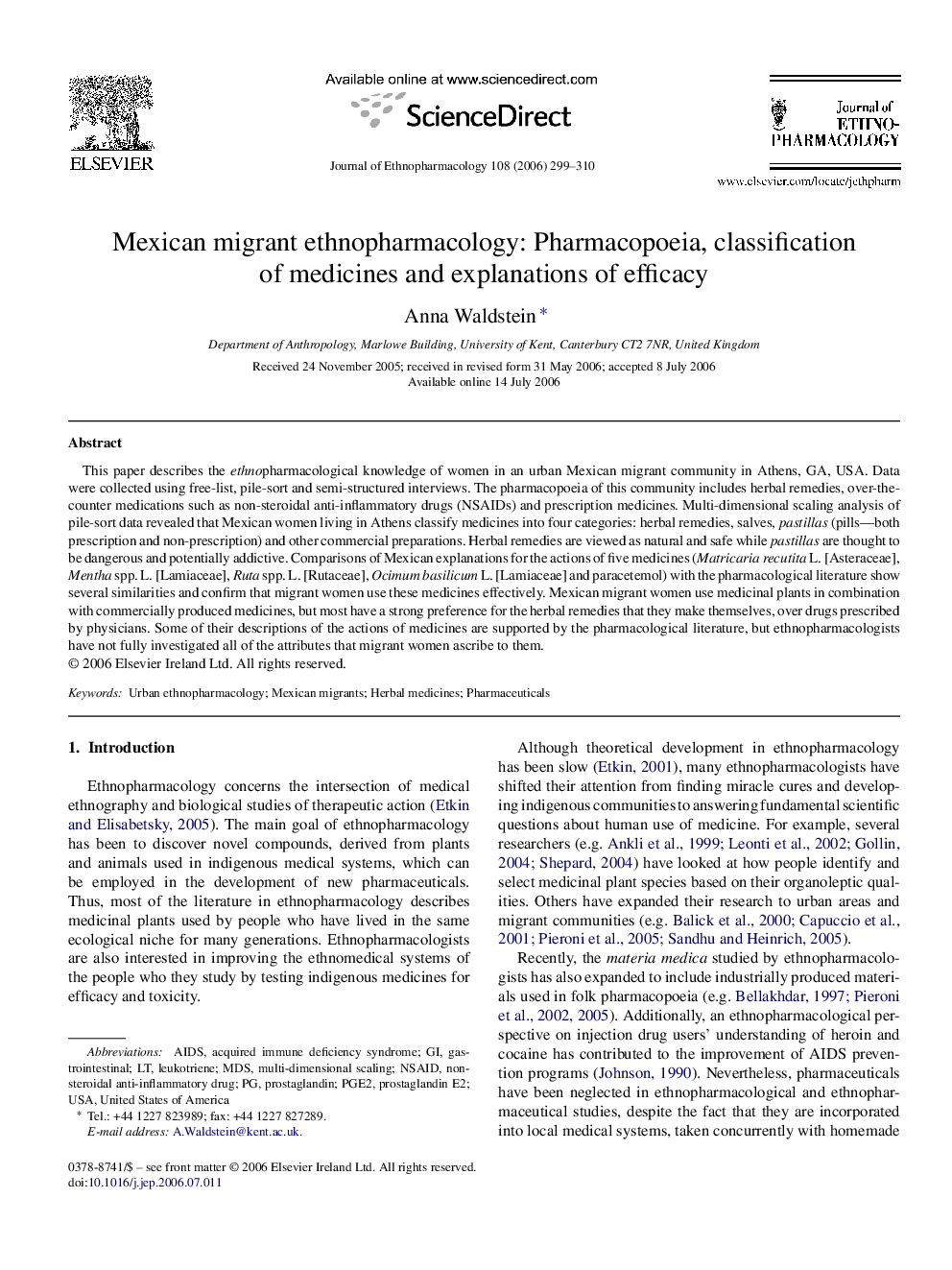| Article ID | Journal | Published Year | Pages | File Type |
|---|---|---|---|---|
| 2548519 | Journal of Ethnopharmacology | 2006 | 12 Pages |
This paper describes the ethnopharmacological knowledge of women in an urban Mexican migrant community in Athens, GA, USA. Data were collected using free-list, pile-sort and semi-structured interviews. The pharmacopoeia of this community includes herbal remedies, over-the-counter medications such as non-steroidal anti-inflammatory drugs (NSAIDs) and prescription medicines. Multi-dimensional scaling analysis of pile-sort data revealed that Mexican women living in Athens classify medicines into four categories: herbal remedies, salves, pastillas (pills—both prescription and non-prescription) and other commercial preparations. Herbal remedies are viewed as natural and safe while pastillas are thought to be dangerous and potentially addictive. Comparisons of Mexican explanations for the actions of five medicines (Matricaria recutita L. [Asteraceae], Mentha spp. L. [Lamiaceae], Ruta spp. L. [Rutaceae], Ocimum basilicum L. [Lamiaceae] and paracetemol) with the pharmacological literature show several similarities and confirm that migrant women use these medicines effectively. Mexican migrant women use medicinal plants in combination with commercially produced medicines, but most have a strong preference for the herbal remedies that they make themselves, over drugs prescribed by physicians. Some of their descriptions of the actions of medicines are supported by the pharmacological literature, but ethnopharmacologists have not fully investigated all of the attributes that migrant women ascribe to them.
